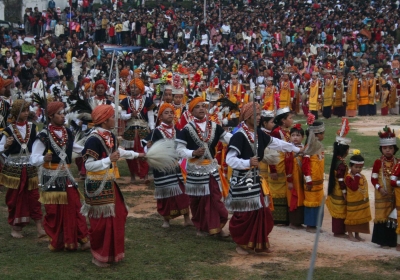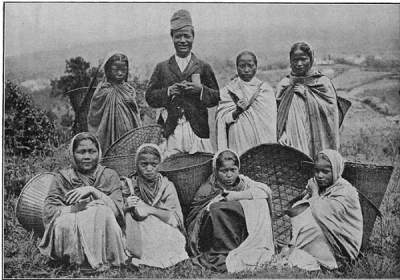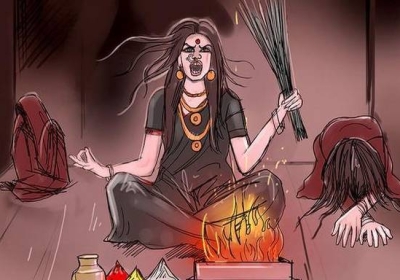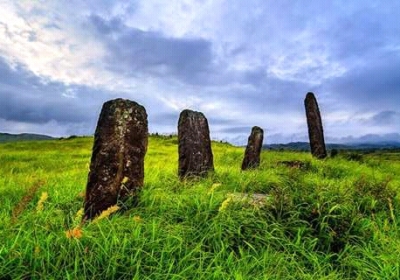Khasi Heritage: The Mammon Serpent Legend
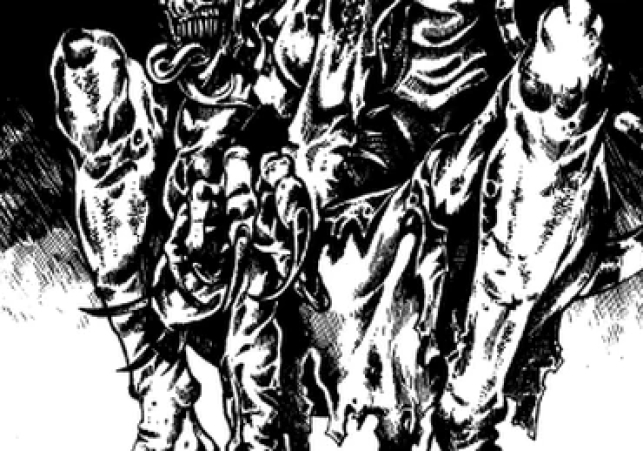
Kla is a kind of mist monster that hallucinates the traveler, particularly in the jungle to wandering aimlessly. The victim will experience being blindfolded and rambling in the wilderness that could extend for weeks and months without any means of nourishment and sustenance. The phenomenon could lead to death for the victims with a weak aura. However, someone with a strong essence might be discovered by familiar people or relatives, where deliberate touching or shaking of the victim’s body, consciousness could be regained. The immediate remedy for such victims is to feed them with energy food and relieve them of starvation.
Boit is one of the tiniest creatures and most mischievous imps or goblins. They are usually invincible, but there are occasions when a few people can witness their tangible form, while in a moment they may disappear and be perceived as an illusion. One of the most interesting narratives is the appearance of the flaming torch from one convergence and spreading in triangular routes consecutively through each torch and lit up the entire slope land of the hillock of the Diengiei range. A closer observation revealed that they are goblins who at times intruded at close proximity along the Nongumlong areas. The physical features of these Boit or goblins consist of a singular rounded body with appendages of the upper and lower limbs, while they consume and excrete from the same mouth. These creatures would not harm human beings unless they intruded upon their path.
Shwar and Taro are similar malevolent spirits of sorcery mentioned earlier. They cause harm to people who do not comply with the desires of the keeper of the cult. In Khasi society, the cult is associated with certain particular clans who are inherited through tradition. The children of a particular clan whose guardian is an exorcist practising Shwar or Taro sorcery, might not be aware of the cult and share generous articles with their familiar companions or strangers. The gifted items are usually a condiment of a piece of betel nut and leaf, along with a smear of lime, a Khasi tradition of generous sharing of affection would cause the effect of the malicious spirit to pass over to the beneficiary. The effect would result in various peculiar ailments for the victims, who are unaware of the cult. The usual behaviour of the victims is the utterance of the familiar voice and the monstrous violent exertion of the victim with the aura of the exorcist. The extreme penultimate torture is the overturning of the head with vomiting of peculiar saliva and sometimes the entire body is suspended in the air. The ailment requires the spiritual intervention of the shaman to perform rituals that would dispossess the demon. It is also said that if the gifted article is yet consumed or not an edible item, it may be returned to the culprit, and they are bound to accept it lest they would be censured by society.
Laman and Thlen are ferocious monsters already described previously and are connected with sorcery and necromancy. The habitual indulgence of the mammon-serpent in devouring humans came to the knowledge of the Sylvan deity, Suidnoh. The other Sylvan deities of the Khasi territory were informed and collectively resolved to eliminate the mammon-serpent who violated the order of Suidnoh. The sacred grove Lawsuidnoh of Laitryngew village, located near Rangjyrteh area, which is a flourishing folk industrial metallurgy, and iron ore is prevalent in the region. A scheme is hatched to terminate the mammon-serpent with the hot molten iron from the smelting furnace and Suidnoh took the mantle to initiate the plan. The mammon serpent hardly appeared overground and his head protruded from a crater inside the Lawsuidnoh forest to catch his human victims. Suidnoh was familiar with the mischievous behaviour of the mammon-serpent and pretended to host a feast for everybody and offer a sumptuous singed lipoma of pork to him. On a fateful moment, the lazy mammon-serpent opened his mouth from the crater and a lump of molten iron was poured as instructed by Suidnoh, and instantly the monster started shrieking in agony and his body shuddered underneath the ground with rattling tremors occurred all around. It took sometime for the Thlen monster to perish, and certain creatures are entrusted to authenticate his demise. None of the creatures dared to attempt it, except for the housefly and lizard. The lizard crawled underground and tickled its tail in the ear canal and a housefly flew in the air and landed on his anus, but the mammon serpent demon was unmoved. Thereafter, it was confirmed the death of the Thlen mammon-serpent demon and mankind rejoiced in merriment to celebrate the feast. The body of the mammon-serpent python was pulled out and a lavish feast was prepared with its flesh, with the stern instruction to eat everything in the venue near the stream that cascades down the waterfalls, known today as the Dainthlen falls. Furthermore, to ensure of any leftovers of the python’s meat and prevent anybody saving even a tiny piece, a strict vigilant inspection was imposed upon everybody, with the motive to terminate the malevolent creature from the earth.
Altogether, every creature and human being, including the indigenous Khasi and the migrant Dkhar people, consumed the python’s meat, except for an old Khasi lady, who discreetly saved a piece for her beloved grandchild. She was careful about her secret task and hid it in her juda hairlock to protect it from any scrutiny. On reaching home, she kept it in a basket on the mantelshelf, and consecutively forgot to give it to her grandchild until one evening, a giggling sound emerged. The old lady checked upon the mantelshelf and saw an animated tadpole inside the basket pleading for mercy. Suddenly, she recalled the piece of python meat she had saved for her grandchild and was frightened that it would be revived. The tiny reptile uttered an intelligible vocabulary and urged the old lady to raise it and it would be rewarded with abundant wealth. This is the beginning of the Khasi tradition of sorcery.


